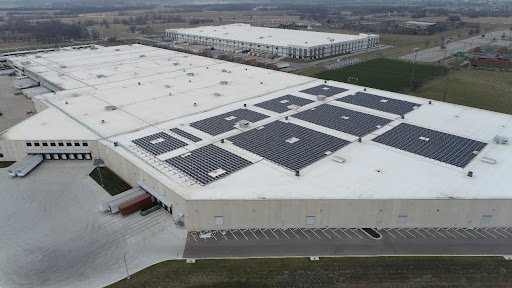If you install solar panels on your home or business, you can technically go “off grid” and cut ties with your utility company completely. But most people installing solar will stay connected to the grid, meaning their solar panels don’t have to provide all of the needed electricity for their building day or night 365 days a year. This process is sometimes called grid interconnection.
Federal law requires all utilities to allow you to hook your solar to their electric grid and allow you to sell power to them. That means your solar panels in both Kansas and Missouri must be allowed to connect to the grid.
When you get solar panels on your home, farm, or business there are two ways to stay connected to the grid: parallel generation and net metering. Both net metering and parallel generation have their pros and cons, and you should make an informed choice about which option you’d like.
The main difference between the two types of solar interconnection is how excess power you generate with your solar panels is dealt with.
You have the legal right to connect your solar panels to the grid
Your Kansas or Missouri utility company has to allow your home, farm, or business to connect solar panels to their grid and to pay you for excess power you generate at “avoided cost.” This has been required by the federal Public Utilities Regulatory Policies Act (PURPA) since 1978 . It is important to understand this law when talking to your utility because there is A LOT of misleading information about the requirements for utilities to connect solar to the grid. PURPA is a federal law overwhelmingly passed by Congress as part of the National Energy Act after an energy crisis caused by oil embargoes to save energy, help the environment, and reduce the US dependence on foreign energy sources.
PURPA is still the law and requires utilities to allow interconnection with solar projects up to 5 megawatts (5,000 kilowatts, which is more than a 10 acre solar farm). That means any home, and most commercial, solar installations count. Through PURPA, projects are connected to the grid using what is called parallel generation.
1 MW solar installation on TVH Parts, in Olathe, Kansas installed by Cromwell Solar. Cromwell is installing a second MW of solar energy on this roof in 2024.
What is parallel generation?
Parallel generation is the practice of utility companies paying customers for power generated by solar panels connected to the grid at “avoided cost.” The amount of the avoided cost can very from state to state. In Kansas and Missouri, utilities pay avoided cost at about $0.03/kWh or about 25% of the retail cost of energy.
There is a lot of misinformation about parallel generation in Kansas and Missouri. Even very reputable sources such as the utilities and regulatory bodies are sometimes mistaken when they talk about the specifics of parallel generation. Adding to the confusion (intentionally or not) is a Kansas law that seems to establish maximums for parallel generation far below what federal law stipulates. That state law makes it sound like parallel generation is capped at 25 kW for residential and 200 kW for commercial solar projects instead of the actual 5000 kW.
What that Kansas solar parallel generation policy actually says is that smaller solar systems (under 25 kW for residential and 200kW for commercial) are given a higher amount of compensation for the excess power the solar panels are producing. These solar panel systems are required to pay out 1.5 times the avoided cost of producing power. At Cromwell we have had to remind many utilities of the law, which allows parallel generation for solar up to 5000 kW. Once reminded, utilities are usually quick to give permissions for solar projects.
These projects will be allowed to interconnect their solar panels to the grid, and the customers will use solar energy whenever it is available to power their building, saving the full retail value of that solar energy as long as they use it when it is being produced. If a solar installation produces more power than they need at any time, that extra solar energy is sent back onto the grid and purchased by the utility at the avoided cost rate.
Because of the big difference between retail rates and avoided cost, it is important to design a solar project taking this into account. Many solar installation companies don’t quite understand this and overpromise the economics of going solar under parallel generation. Adding lots of extra generation capability to a solar project and hoping to capitalize by selling extra power to the grid isn’t typically a viable strategy under parallel generation.
For parallel generation solar projects, it’s important to either include batteries to store power for later use, or size the solar installations small enough to not overproduce during daylight hours.


